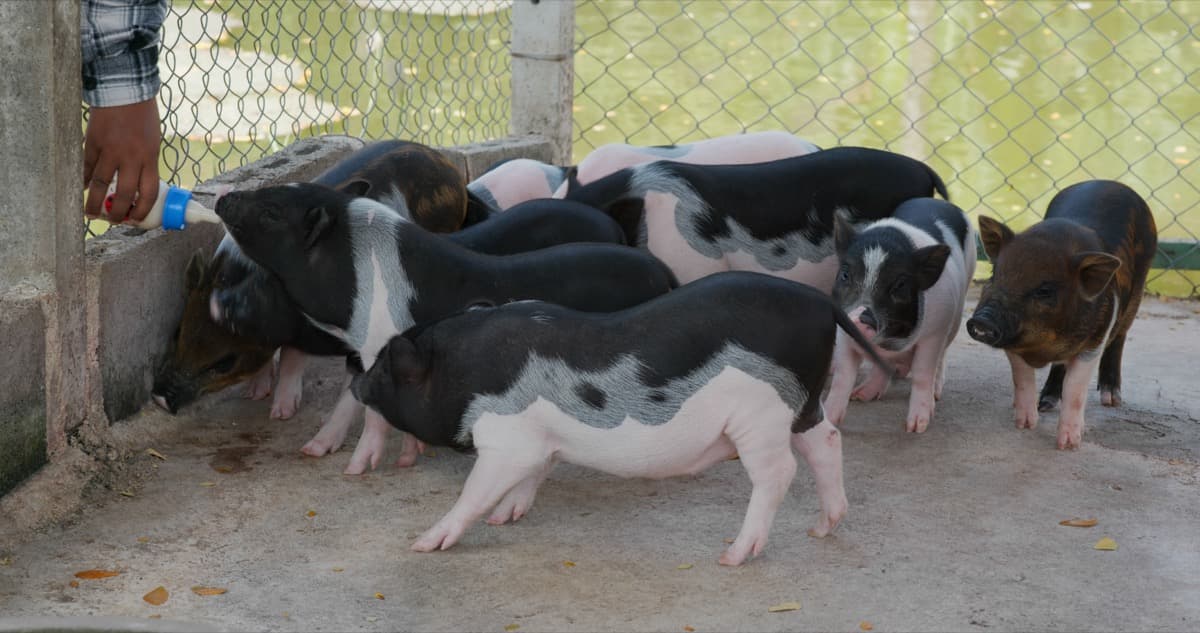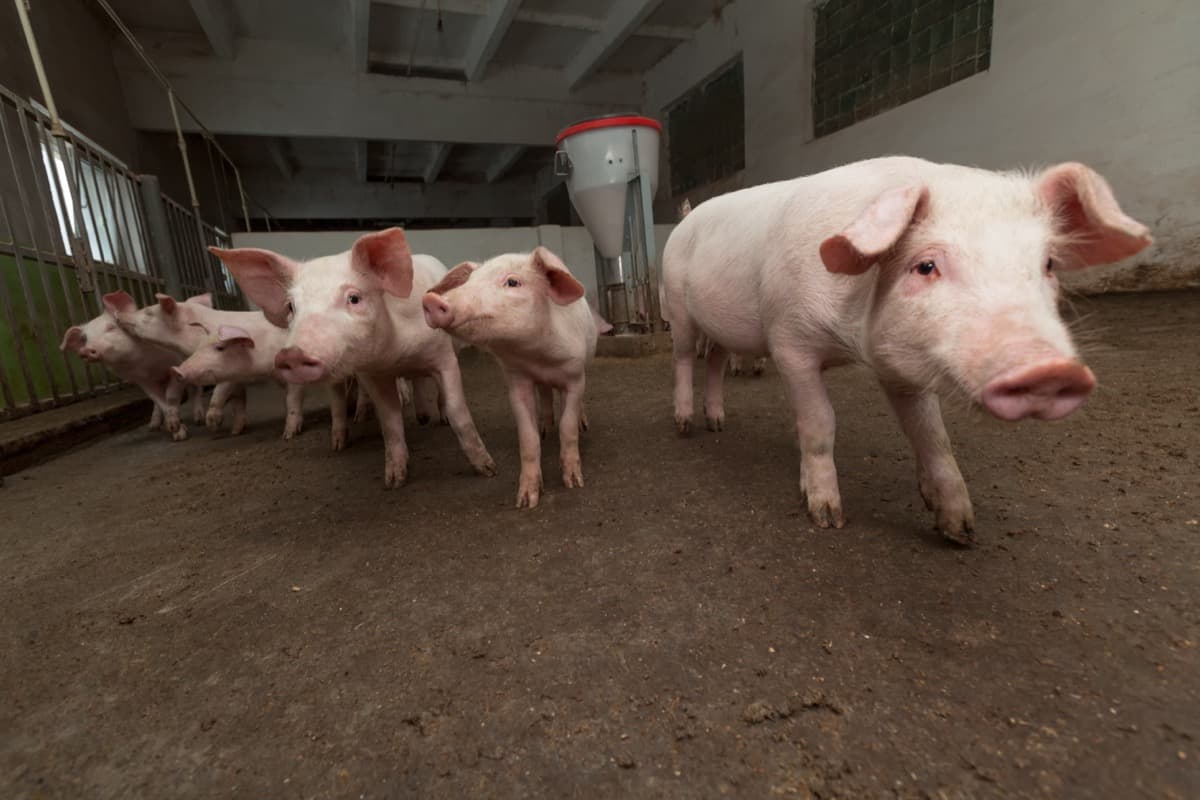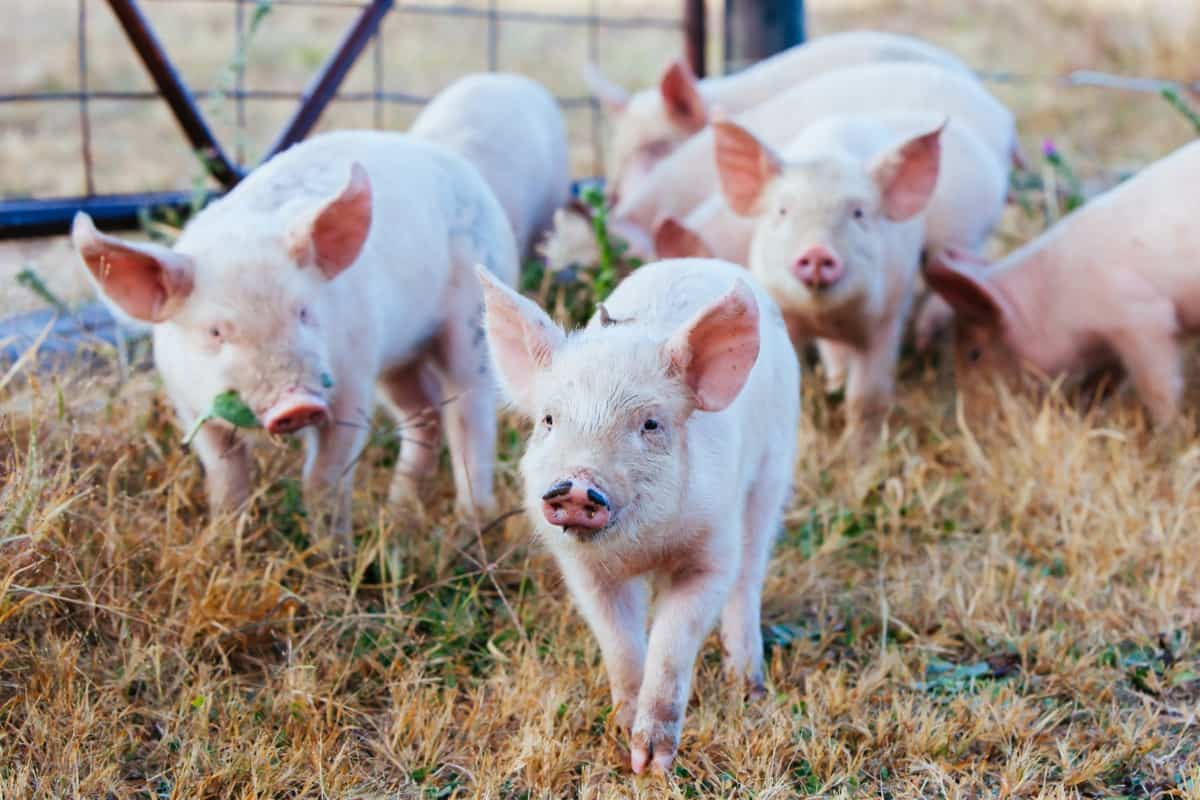Pigs are more susceptible to the viral disease known as classical swine fever (CSF). It spreads quickly both within and between herds and is extremely contagious. Pigs that are infected exhibit a range of signs, such as fever, lethargy, hemorrhages, vomiting, and diarrhea, which is frequently yellow. Also, purple discoloration on infected swine’s legs, lower belly, and ears are possible.

Additionally, CSF can cause neurologic symptoms, infertility, and miscarriage. RT-qPCR, viral isolation, immunofluorescence assay, serologic tests like ELISA, and virus neutralization are just a few techniques used to diagnose CSF. Quick discovery is crucial to stop the spread of the illness and reduce financial losses.
However, vaccination is a successful method of disease prevention. In contrast to nations that are thought to be disease-free, vaccination is frequently used in areas where CSF is endemic. In addition to vaccinations, controlling outbreaks may also require additional steps like stringent biosecurity procedures, movement restrictions, and the euthanasia of infected animals.
Classical Swine Fever Management in Swine
Causes of Classical Swine Fever Disease in Swine
CSF is a viral disease that infects pigs and is caused by a small, enveloped RNA virus from the family Flaviviridae and the genus pestivirus. This virus is closely related to other pestiviruses like sheep’s border disease virus (BDV) and cattle’s bovine viral diarrhea virus (BVDV).
Although these ruminant pestiviruses can infect pigs, most infections do not result in clinical illness. The pig’s immune system quickly clears them. However, pigs do develop an immune reaction after contracting these viruses. It is crucial to remember that CSF is very contagious and can significantly harm pig communities economically.
Disease Cycle of Classical Swine Fever Disease
Classical swine fever (CSF) is a highly spreading viral disease mostly spread through direct contact with infected pigs or contaminated equipment, clothing, or feed. The virus can also spread over brief distances via airborne transmission. Once an animal is infected, the virus replicates in the lymph nodes. It distributes throughout the body, causing the disease’s recognizable clinical symptoms. The virus is shed by infected swine in their urine, feces, saliva, and nasal secretions, contaminating the environment and spreading the disease.
What are the Symptoms of Classical Swine Fever Disease?
Acute Infection
- Pigs with an acute infection look seriously ill, inactive, and sleepy with an arched backs.
- Some pigs pose with straight tails and droopy heads.
- Constipation, anorexia, vomiting, high temperature, and huddling could occur.
- Conjunctivitis, a stumbling walk, back weakness, and purplish abdominal skin discoloration
- Pigs may experience convulsions in the final stage of the disease, which causes them to become recumbent before passing away.
- During the final phases, severe diarrhea also develops.
In case you missed it: Swine Dysentery Disease Management in Pig/Swine: Symptoms, Treatment, Prevention, and Management

Chronic Form
- Up to a month of Dullness, capricious appetite, pyrexia, and diarrhea
- It’s usual to have hair loss, dermatitis, ear or abdominal pigmentation, and weight loss.
- A pig with a long-term infection might have a head that is too big for its small body.
Diagnosis of Classical Swine Fever Disease
Clinical symptoms, serology, virus isolation, and PCR are all used to identify classical swine fever (CSF). Because the symptoms are identical to those of other swine diseases, clinical diagnosis is challenging, making laboratory confirmation important. African swine fever and other infectious and non-infectious diseases are included in the differential diagnosis. Virologic studies must verify the diagnosis of CSF.
The virus can be found in whole blood, nose swabs, tonsil scrapings, and tissues. Direct immunofluorescence, ELISA, and PCR can all be used to find CSFV protein. RT-PCR is frequently used to find CSFV RNA in tissues, blood, serum, or oronasal secretions. Based on the DIVA principle, new generations of CSFV marker vaccines have been created that enable emergency vaccination. They can be differentiated from a natural infection using ELISA.
Treatment and Control of Classical Swine Fever Disease
- In non-endemic countries, outbreaks are controlled by eliminating exposed herds and strict sanitary measures.
- Live-attenuated vaccines are used in endemic areas to control the spread of CSF.
- Local laws establish strict control measures, and CSF is a notifiable disease.
- Infected animals are culled to prevent the disease’s spread.
- Quarantine and pre-emptive slaughter of susceptible animals within determined distances from the outbreak are applied.
- Emergency ring vaccination around the outbreak can prevent the further spread of CSFV.
Preventive and Management Measures to Control Classical Swine Fever Disease
Preventive Measures
- Vaccination of pigs in high-risk areas.
- Strict control measures for pig transportation.
- Regular disinfection of pig farms.
- Proper disposal of infected pigs and their products.
- Controlling the movement of humans and vehicles in and out of pig farms.
- Quarantine of new animals entering a herd.
Management Measures
- Isolation and separation of infected pigs from healthy ones.
- Quarantine infected farms to prevent the spread of the disease.
- Implementation of strict biosecurity measures on pig farms.
- Use of antiviral medication to manage symptoms.
- Monitoring of infected animals to prevent the spread of the disease.
- Proper disposal of infected pigs and their products to prevent further contamination.
Vaccination Schedule for Classical Swine Fever Disease in Swine
- Pigs are vaccinated at around three months of age.
- Booster vaccinations are given annually or as recommended by the vaccine manufacturer.
- Pregnant sows are vaccinated two to four weeks before farrowing to provide immunity to their piglets.
- Modified live vaccines (MLV) are used to control Classical Swine Fever.
In case you missed it: Foot and Mouth Disease (FMD) Management in Pigs/Swine: Symptoms, Treatment, and Prevention

Impact of Classical Swine Fever Disease
- CSF is endemic in many central and South American, Caribbean, and Asian nations.
- Due to high mortality, lower productivity, and trade restrictions, the disease can cost the economy.
- CSF is incurable, so avoidance and control are essential.
- In endemic nations, highly effective vaccines prevent CSF.
- Rapid confirmation of suspected cases, quarantine, and depopulation of exposed herds replace vaccination in nations without the disease.
- CSF outbreaks can cause the death of animals, affecting rural communities’ social and economic life.
- CSF is prevented by biosecurity, monitoring, and animal testing.
Conclusion
Classical swine fever is a highly contagious and often fatal viral swine disease. No treatment is available, so prevention and control measures, such as vaccination, strict biosecurity measures, and culling of infected animals, are critical to managing the disease.
- Beneficial Insects in Pest Management
- Natural Solutions for Pest Control in Flower Gardens
- Types of Fungicides Used in Agriculture
- Common Issues in the Fruit Development Stage of Pomegranate Farming
- Fruit Development Issues in Papaya: Easy Solutions and Treatment
- Soil-Borne Diseases and How to Protect Your Plants
- Practices to Prevent Disease Spread in the Garden
- From Wilted to Thriving: How to Treat Root Rot Naturally in Houseplants
- Natural Remedies to Cure Brown Spots on Fig Tree Leaves